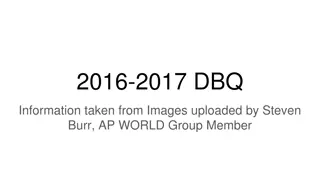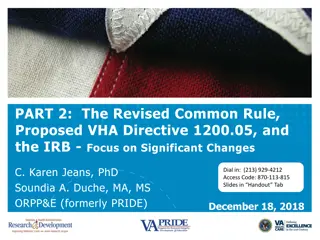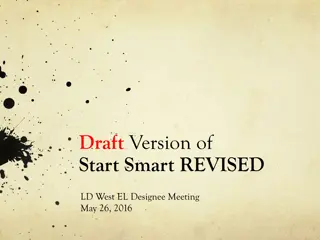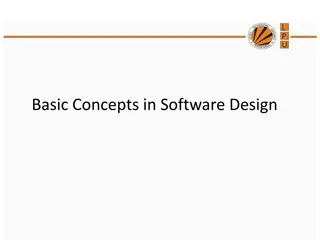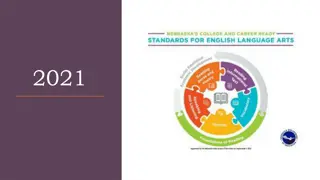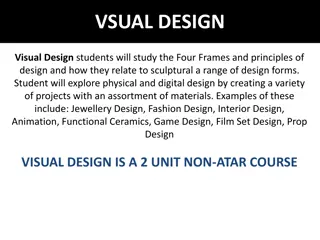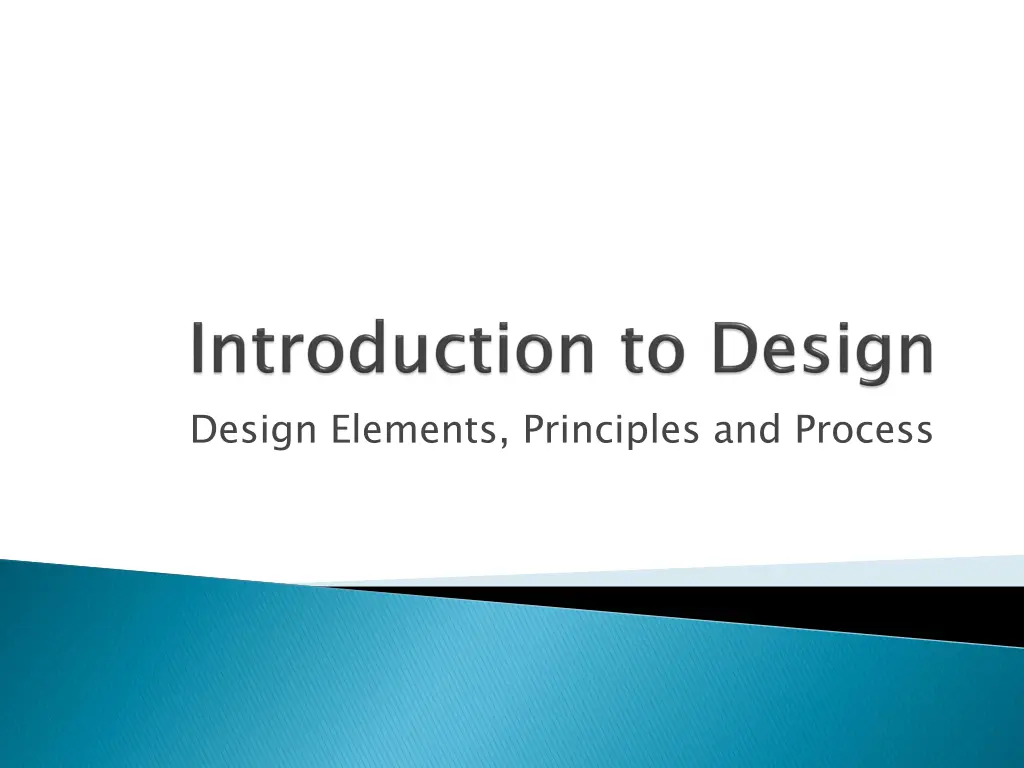
Mastering Design Elements and Principles for Effective Communication
Explore the fundamental elements and principles of design to enhance visual communication. Learn about lines, shapes, color, texture, and more to convey messages effectively through imagery, color, and typography in this detailed guide.
Download Presentation

Please find below an Image/Link to download the presentation.
The content on the website is provided AS IS for your information and personal use only. It may not be sold, licensed, or shared on other websites without obtaining consent from the author. If you encounter any issues during the download, it is possible that the publisher has removed the file from their server.
You are allowed to download the files provided on this website for personal or commercial use, subject to the condition that they are used lawfully. All files are the property of their respective owners.
The content on the website is provided AS IS for your information and personal use only. It may not be sold, licensed, or shared on other websites without obtaining consent from the author.
E N D
Presentation Transcript
Understand and apply concepts in elements of design. Understand and apply the different principles of design. Understand the importance of using visual imagery, color, and typography to convey a message.
Formal design elements for communication are line, shape, color, texture, value, and format. These physical elements of design are the tools for communication. All formal design elements are interdependent and interact with one another, complementing one another as a team
The type of line is determined by its movement: straight, angular, or curved. Visual quality determines how a line is drawn: thick or thin, broken or smooth. Shapes are defined by color or lines drawn into a closed form as a shape outline. Strength Strength Peace Peace Graceful Graceful Shape (defined by lines) Shape (defined by lines) Shape (defined by color) Shape (defined by color)
Lines are used to : Contour or Outline Divide space Decoration Contour or Outline: Define Edges Divide space : Used to separate areas in an image Decoration : Used to adorn or embellish Divide Space Divide Space Decoration Decoration Contour Contour
Texture describes surface quality like rust, velvet, or sandpaper. Visual texture is creating the illusion of texture using varying line qualities, patterns, or adjusting color value. Value determines depth and dimension through contrast of lightness and darkness of an element. High-contrast images evoke a different response from low-contrast images.
This is the most powerful design element. Hue is the color name. Value is the shading, tonality, or tint of a color (e.g. light and dark blue). Saturation is the intensity of the color (e.g. bright red or dull red). Traditional Primary colors are red, yellow, and blue (RYB) but computer-based Primary colors are red, green and blue (RGB). These colors are the main colors that create all colors in printing. Secondary colors in printing are orange, green, and violet, which can be further mixed for color variations.
Traditional Primary Colors (RYK) Computer-based Primary Colors (RGB)
A color wheel is used as a guideline that displays basic colors and their complementary or opposite colors. Primary colors for electronic display are red, green, and blue. They are the basis for mixing colors on the computer. Primary colors used in printing are technically cyan, magenta, and yellow (CMY). Black is used for contrast and color purity (K). Hence CMYK colors. RGB colors can be converted for a close match to many CMYK colors for printing; however, they may not be exact.
White for purity or emptiness. Neutral color for web backgrounds. Black for elegance, for reversed type, as an attention getter. May suggest negativity. Light gray can have negative symbolism, but can also provide a neutral balance as a background for images or colored text. Red can symbolize love, strength, or anger depending on the tone. Pink is used in bakery industry and suggests high value in packaged goods.
Violet for regal symbolism. Blue for professionalism, spirituality, fantasy, or isolation, depending on the quantity and shading used. Green signifies wealth or nature, or can imply contrary effects such as jealousy and greed. Yellow provides warmth or fast service, or may signify danger.
Format determines what the design will be used for like CD covers, brochures, posters, and so on. Portrait orientation is the vertical display of a document. Landscape orientation is the horizontal display of a document.
Principles in design are followed to combine individual elements into one harmonious piece. This involves the following: Taking various elements and providing proper balance Adding selective emphasis to create a focal point Using rhythm to set the mood Establishing unity
Balance is arranging elements within an area so that these elements promote a harmonious response. Formal balance places elements with equal distribution to convey integrity or trustworthiness. Informal balance uses elements that counterbalance one another. This promotes a casual, energetic, or trendy atmosphere. Radial balance arranges elements around a central point to promote unity and teamwork. Formal Balance Formal Balance Informal Balance Informal Balance Radial Balance Radial Balance
Formal Balance Formal Balance Informal Balance Informal Balance Radial Balance Radial Balance
Negative space or the absence of visual elements may be used to promote luxury, elegance, or sense of mystery. It is the space around the subject of an image. Positive space uses visual elements or text to identify or explain something in a particular document. The focal point of your image Create useful projects using Photoshop, InDesign, and Illustrator. Learn what you need to know. Create useful projects using Photoshop, InDesign, and Illustrator. Learn what you need to know. digitoolkit.com digitoolkit.com digitoolkit.com digitoolkit.com digitoolkit.com digitoolkit.com
Negative Space Negative Space Positive Space Positive Space Negative Space Negative Space Positive Space Positive Space
Emphasis provides direction to various elements in a given design. Designers use a focal point to lead the viewer to the most important element. Focal points can be determined by an element s size, shape, color, texture, or position in the layout.
Rhythm is the visual pattern creating a sense of movement between repeating elements.
Unity is the organization of individual elements to promote balance, rhythm, type, imagery, and tone.
Thumbnails are sketch variations of an idea. Roughs are a full-sized rendition of the design combining various thumbnail sketches. Comps show exactly what the final design will look like. This is where you need final approval with the client. Final elements are for service provider, including instructions for the pressman or media designer, proofs, and electronic disk with fonts and images
Typography Categories of Type Character and Line Spacing Imagery Graphic File Formats
Typography is the study and use of text in a document. A typeface or type family is a group of fonts that share a basic character construction, like the Arial family. Arial, Arial Black, and Arial Narrow are all in the same type family. A font is the immediate family of characters such as Arial Black, Verdana, or Wingdings. A font style is a change made to a character such as bold, italicize, or underline. A font size is measured in points instead of inches, where 72 points is the equivalent to one inch.
L o L o o o s e T r a c k Tight Tracking s e T r a c k i i n g Tight Tracking n g Tracking adjusts spacing between characters and words (Overall Letterspacing). Kerning adjusts spacing between pairs of characters. (Selective Letterspacing) Leading refers to the spacing between lines of text. The style or arrangement of setting type is called type alignment. Left aligned text flushes to the left side. Left aligned text flushes to the left side. Right aligned text flushes to the right Right aligned text flushes to the right side. side. Centered text places lines of type to the center. Centered text places lines of type to the center.
Vector images are illustrations, logos, drawings, or clip art that have a limited number of colors, but can be enlarged to any size without affecting the quality of the original image. Bitmap or raster images are photographs, paintings, or complex designs that may use millions of colors, but should not be enlarged since they will deteriorate in quality.
Graphic File Formats Format Advantages Considerations Records transparencies in bitmap and vector images. Compresses files without losing data. Web use. Can t be read by older browsers. Larger size files but can still be used for the Web. Cannot be enlarged PNG Used for vector graphics and animation. Used on the Web. Keeps transparencies. GIF files have only 256 colors. Scaleable. GIF Data is thrown out each time the image is saved gradually deteriorating quality. No transparencies. Not for commercial press. Cannot be enlarged Compressed format used in photographic images. Keeps files sizes small. Used for Web and ink jet proof printing. JPEG Most accurate recording of detail in photographs. Quality maintains as original regardless of changes. Used primarily for commercial printing. Largest file size. Not used for the Web. Cannot be enlarged. Negative Space TIFF Negative Space Compresses text and graphics in documents without losing data for electronic distribution and the Web. Works best with many documents. Can also be used for soft proofs. Mostly set up as read only, usually not editable. Can also be read in free Acrobat Reader program. PDF Preferred method when combining graphics and type. Vector graphics can be still be scaleable. Used extensively for commercial printing. Large file size. Not for the Web. EPS
Go to www.960.gs Choose any of the website featured on that website and then do the following: Identify Design Elements used on the chosen website On each elements identified explain how it is used by the website. Identify the Design Principles used on chosen website. One each design principles identified explain how and where it is used. Write your work on Microsoft Word with your name and the website that you chose to analyze. Save your work as IS245-Exer1-YourName example IS245-Exer1-John Smith.doc www.960.gs YourName.doc, for
Elements of Design likeline, shape, color, texture, Elements of Design value, and format are tools for communication that would create different impressions to the user. Design Principles design into one harmonious piece. Typographies and Graphics considerations need to consider the different nuances in types and graphics for the necessary impact for your design. Design Principles are guidelines to make your Typographies and Graphics considerations you





